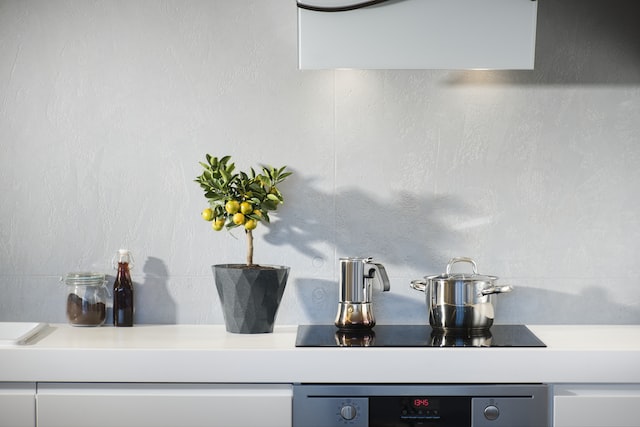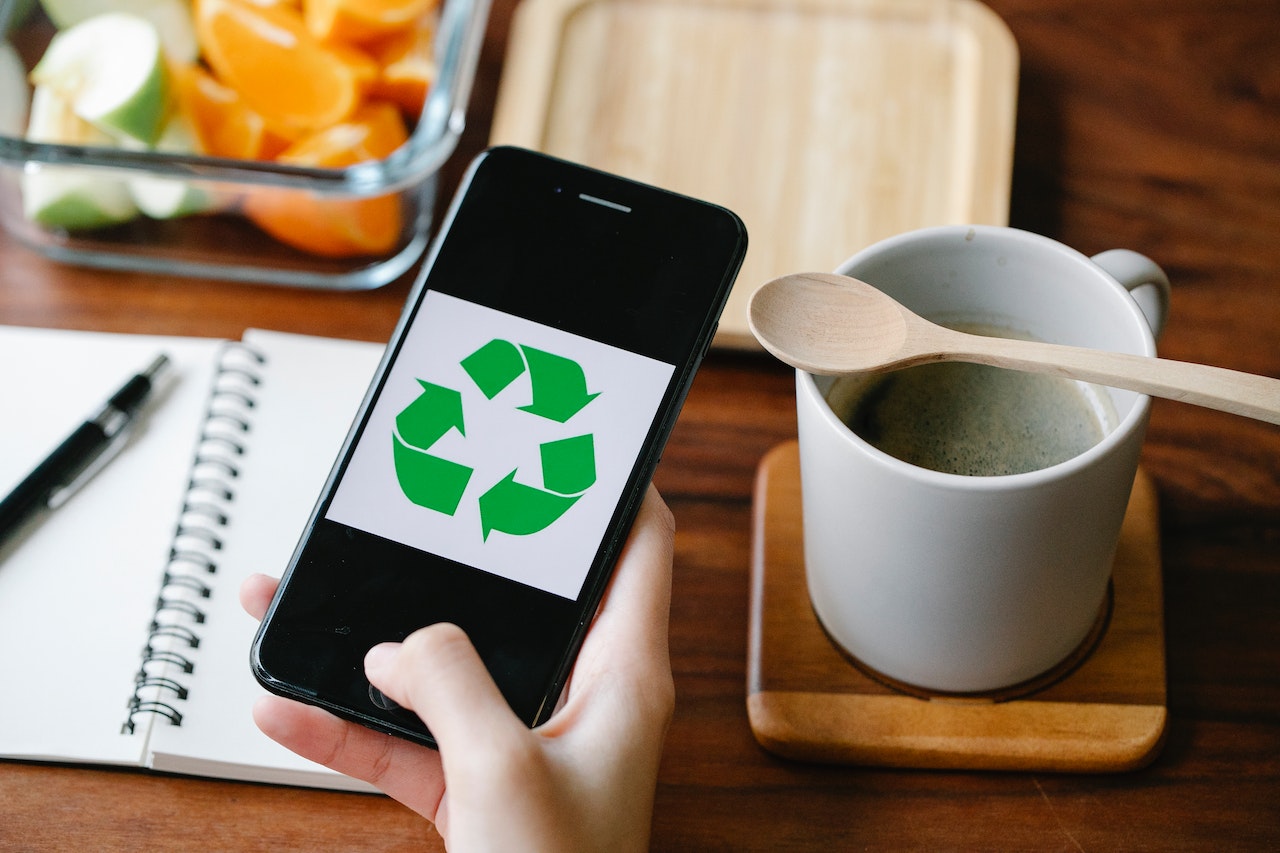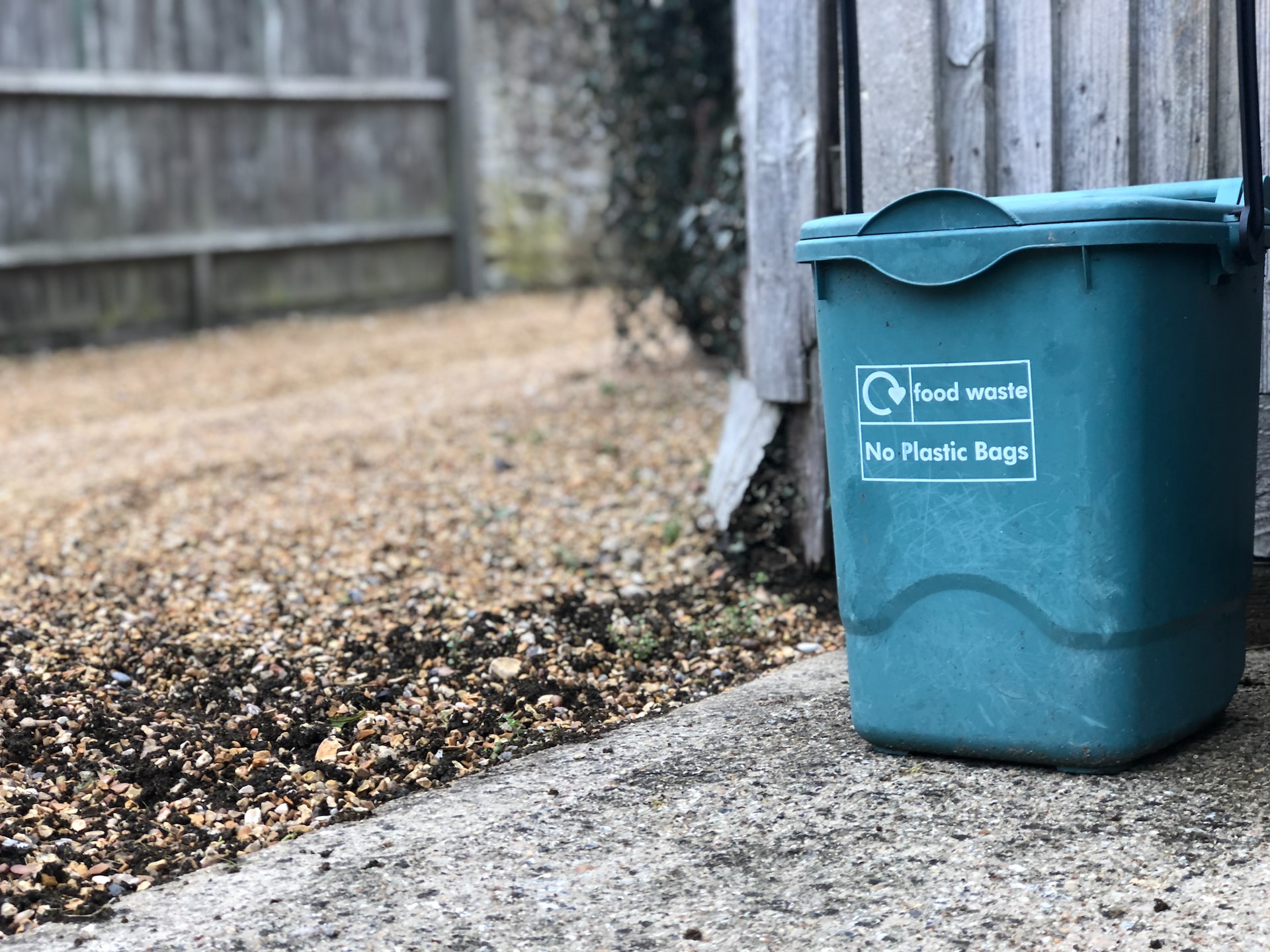Chemical stress is the body’s response to exposure to harmful chemicals or pollutants, which can lead to various health problems. Exposure to these pollutants can occur in many ways, including through the air we breathe, the food we eat, and the products we use in our homes. Inhaling or ingesting harmful chemicals can lead to respiratory problems, allergies, headaches, nausea, and other symptoms. It is important to take steps to reduce exposure to harmful chemicals in the home by using safe and natural products, ensuring proper ventilation, and regularly maintaining HVAC systems to remove pollutants from the air.
Read on to learn about the impact these chemicals can have on our bodies and how you can take steps to make your home healthier and chemically stress-free.
What is VOC?
VOC stands for “volatile organic compound.” VOCs are a group of chemicals that can evaporate and release into the air at room temperature. They are often found in common household products like paints, cleaning supplies, and air fresheners, as well as in industrial chemicals and fuels.
VOCs can have negative health effects, including respiratory irritation, headaches, and nausea, and they can contribute to air pollution and the formation of ground-level ozone. Many countries have regulations and guidelines for acceptable levels of VOCs in consumer and industrial products to minimize their impact on human health and the environment.
The specific health effects of VOCs depend on the type and level of exposure, as well as individual factors such as age, preexisting health conditions, and overall health status. Long-term exposure to low levels of VOCs can also have negative health effects, including chronic respiratory problems and increased risk of certain types of cancer.
It is important to minimize exposure to VOCs by using products that are low in VOCs, using them in well-ventilated areas, and following the manufacturer’s instructions for use and disposal.
Sources of chemical stress in your home
Certain materials and products used in homes can emit harmful chemicals and contribute to chemical stress and aren’t limited to one room or area.
HVAC systems
One common source of chemical stress is indoor air pollution from the HVAC system, which can become contaminated with various types of pollutants if not properly maintained. Some common pollutants that can be caught in your HVAC system include:
- Dust
- Pet dander
- Pollen
- Mold
- Bacteria and viruses
Chemical stress can be particularly problematic in the digital age, as people spend more time indoors and may be exposed to various indoor pollutants from sources such as cleaning products, construction materials, and furniture. Poor indoor air quality can lead to a range of health problems, including respiratory issues, headaches, fatigue, and allergies.
To prevent chemical stress from your HVAC system, it is important to have your system regularly inspected and cleaned by a qualified professional. This can help to remove any built-up contaminants and improve the quality of the air in your home. It is also a good idea to use high-quality air filters and to avoid using products that emit harmful chemicals, such as air fresheners and cleaning sprays, whenever possible.
If you have a home warranty plan, be sure to get your HVAC system serviced regularly to ensure that it properly filters out sources of indoor pollution.
Cleaning products
Standard household cleaners can irritate the eyes, skin, and lungs, cause burns and rashes, and much more. Fortunately, natural cleaning is not only a cinch but also much cheaper. All you need to be a natural cleaning whiz is a little know-how.
First, it’s important to be able to identify which chemicals you want to avoid in household cleaners. Some of the most important on the list are VOCs (volatile organic compounds) like acetone and ethanol, ammonia, bleach, and phthalates.
To reduce chemical stress from cleaning products, it’s important to choose products that are labeled as “green” or “natural.” These products are often made with safer, more eco-friendly ingredients that are less harmful to human health. Below, you’ll find a few handy natural cleaners to replace those harsh chemicals.
- White vinegar. Used by itself or with water, this basic cleaner is an excellent degreaser and general cleaner for hard surfaces and windows.
- Baking soda. Baking soda is a great scrubbing agent for scratch-proof surfaces with tough grime. It can also work in place of dish soap, with extra rinsing.
- Salt. Like baking soda, salt is good for scrubbing tough grime when liberally applied to a sponge.
- Hot water. Applying hot water to hardened dirt and allowing it to sit for 10 minutes will soften the dirt. You can also fill a mug with water and heat it in your microwave to soften food residue and easily wipe it away.
- Towels. Aside from using them to wipe things dry, you can put a few drops of your favorite essential oil on a towel and throw them in the dryer in place of dryer sheets.
- Steam cleaning. It eliminates the need for chemical cleaning agents, which can be harmful to human health and the environment. The high-temperature steam effectively kills bacteria, germs, and other pathogens, making it a natural and safe alternative.
Air fresheners
Air fresheners can contribute to chemical stress at home because they often contain VOCs like as benzene, formaldehyde, and phthalates. These chemicals are then released into the air when the air freshener is sprayed or evaporated.
VOC exposure can cause various health problems, including respiratory irritation, headaches, dizziness, and even long-term health effects such as cancer. In addition, some air fresheners contain allergens that can trigger asthma or other allergic reactions.
To reduce chemical stress from air fresheners, it is best to avoid using them altogether or choose natural options such as essential oils or plants to freshen the air. Opening windows and improving ventilation can also help to reduce the concentration of indoor air pollutants.
Plants as air fresheners
When it comes to cleansing the air in our homes, aerosol air fresheners, plug-ins, and scented candles have long been popular choices. While these options smell nice, they contain chemicals – such as VOCs (volatile organic compounds) – that negatively impact our health.
Exposure to these compounds has the following effects on humans:
- Shortness of breath
- Headaches
- Dizziness
- Skin problems
- Nausea
- Irritation in the eyes, nose, and throat
- Fatigue
By choosing natural air freshening methods, you’ll reduce your exposure to these harmful compounds. One of the best ways to eliminate stale air and airborne toxins is by opening your windows and creating a cross-breeze that circulates the room. Another way to improve the air quality in your home is to keep houseplants around.
All plants produce oxygen, but some – such as the following – are better at natural air freshening than others:
- Barberton Daisy
- English Ivy
- Snake Plant / Mother-in-Law’s Tongue
- Chrysanthemum
- Spider Plant
- Aloe Vera
- Broad Lady Palm
- Red-Edged Dracaena/Dragon Tree
- Weeping Fig
- Chinese Evergreen
Many houseplants are easy to care for, so keeping a few in your home won’t take much effort on your part.

Pesticides
Exposure to pesticide chemicals can cause a range of symptoms, such as headaches, nausea, dizziness, respiratory problems, and skin irritation. Long-term exposure to some of these chemicals may lead to chronic health problems, including cancer, reproductive disorders, and neurological damage.
Common home pesticides include insecticides, herbicides, and rodenticides. Insecticides are used to kill or repel insects, herbicides are used to kill or control weeds, and rodenticides are used to kill or control rodents. These pesticides may contain chemicals such as pyrethroids, organophosphates, and carbamates, which can be harmful to human health.
To minimize the risk of chemical stress from home pesticides, it is important to carefully read and follow the instructions on the product label. Use only as much as necessary and avoid using pesticides indoors unless it is specifically labeled for indoor use. It is also important to store pesticides safely and dispose of them properly, according to local regulations. Using natural or non-toxic pest control methods such as essential oils or traps may also be an option to reduce the risk of chemical stress.
Building materials and furniture
Certain building materials and furniture can release harmful chemicals and contribute to chemical stress in the home. Here are a few examples:
- Formaldehyde is a colorless gas with a strong odor that is commonly found in pressed wood products, such as particleboard, plywood, and medium-density fiberboard. Formaldehyde can cause irritation of the eyes, nose, throat, and skin and has been classified as a human carcinogen by the International Agency for Research on Cancer.
- Flame retardants are chemicals added to furniture, mattresses, and other household items to reduce their flammability. However, some flame retardants, such as polybrominated diphenyl ethers (PBDEs), have been linked to developmental and reproductive problems and have been found to accumulate in the environment and in human tissues.
- Volatile organic compounds (VOCs) are chemicals that are emitted as gases from a variety of household items, such as paints, varnishes, adhesives, and cleaning products. VOCs can cause a range of health effects, including eye, nose, and throat irritation, headaches, dizziness, and nausea.
It’s important to choose building materials and furniture that are low in harmful chemicals and to use household products that are environmentally friendly. Proper ventilation, such as opening windows and using exhaust fans, can also help to reduce indoor air pollution.
Addressing chemical stress room-by-room
Bedroom
The bedroom should be a place of refuge, but your furnishings can cause an allergic reaction. Fortunately, there are some easy ways to control the number of toxins in your bedroom.
What’s in your mattress?
Your mattress introduces two main areas of concern: what it’s made of and what’s in it.
First, it’s best to consider buying a mattress made of dense or natural materials since traditional mattresses are a hotspot for bacteria. By switching to natural latex, bamboo, coconut coir, or another natural material, you’ll significantly reduce the risk of an allergic reaction. The second area of concern involves the presence of dust mites. Mites are an unfortunate part of owning soft furniture since they love the skin flakes people shed. They can provoke allergic reactions like shortness of breath, nasal irritation, and skin sensitivity. Fortunately, by using a mite-proof mattress and pillow covers and washing your bedding regularly, you can curb the dust mites in the bedroom.
The best bedding
There are plenty of natural alternatives to bedding made with synthetic, chemical-treated materials. An essential characteristic of hygienic bedding is that it is breathable. Natural fibers, like cotton, bamboo, linen, and silk, offer superior breathability without uncomfortable static electricity or skin sensitivity.
Furnishing health
The furniture in your bedroom, outside your mattress, is a not-so-obvious source of chemical toxins. There are chemical toxins found in your curtains, the paint on your bookshelf, the plywood backing on your dresser, and the stain-resistant treatment on your chair. Avoiding plastics is especially crucial to creating a healthy bedroom.
You can avoid bringing extra toxins into your bedroom by choosing furnishings made from these materials:
- Glass
- Ceramic
- Metal, including stainless steel
- Natural wood or bamboo
Instead of these materials:
- Pressboard, including chipboard, plywood, and MDF
- Foam-stuffed furniture
- Furniture upholstered with moth-, fire-, or stain-resistant treatments.
- Furniture made using PVC/vinyl
Natural materials anywhere in the home are more expensive than furnishings made with synthetic materials. Protecting your health in the long term far outweighs the price.
Children’s bedrooms
Though last on our list, the kids’ bedroom is arguably essential to detoxify. Aside from bedding and furnishings, a child’s room poses a few additional challenges concerning their extra belongings. Depending on your child’s age, you may have playmats on the floor, plastic play furniture, plastic toys, easy-wipe vinyl changing pads, vinyl-covered baby mattresses, and so forth.
Their bedding and mattresses are easy to replace, following the same example you set in your room. The plastic and vinyl items may be a little more challenging to replace. You’ll need to find natural materials that are just as easy to maintain and can take a beating. Replacing synthetic playmats with natural rubber is easy, or simply use an untreated rug or carpet made from a natural material. When it comes to the health of your child, toxin-free materials for an eco-friendly baby nursery are always best.
Kitchen
A big part of maintaining chemical stress-free health is how you eat and cook. It goes without saying that highly processed foods have plenty of added sugars, preservatives, stabilizers, artificial flavoring, dyes, and so on. The basic ingredients we cook with – that is, the fruit, vegetables, nuts, meats, and dairy in our diet – can contain mercury, fertilizer, growth hormones, insecticides, and antibiotics.
Organic eating is one way you can improve the overall quality of the basic ingredients you’re cooking with. By choosing organically grown or raised foods, you take a huge step toward ruling out synthetic pesticides and fertilizers, plus the other chemicals to make our food look or smell better, last longer, or grow bigger. It may be tempting to think that farmed fish are mercury-free, but since farmed fish are still raised in – or very near – the ocean, mercury can leech into their water. Additionally, farmed fish are given fish meal, which is made from scraps that have been processed for human or pet consumption. So, fish farms get their mercury content from two sources, not to mention the polluted run-off water that flows through the farm from inland.
While it may not be possible to edit all the chemical toxins from your diet, there are ways to mitigate it:
-
- Organic eating
- Don’t use Teflon-coated cookware (Teflon contains PFOA — they often cause kidney and liver diseases, infertility, and thyroid disorders, among other things).
- Avoid canned/preserved food unless you canned/preserved it yourself.
- When possible, avoid convenience foods.
Toxin-Free Cleaning
Standard household cleaners can irritate the eyes, skin, and lungs, cause burns and rashes, and much more. Fortunately, natural cleaning is not only a cinch but also much cheaper. All you need to be a natural cleaning whiz is a little know-how.
Below, you’ll find a few handy natural cleaners to replace those harsh chemicals.
- White vinegar. Used by itself or with water, this basic cleaner is an excellent degreaser and general cleaner for hard surfaces and windows.
- Baking soda. Baking soda is a great scrubbing agent for scratch-proof surfaces with tough grime. It can also work in place of dish soap, with extra rinsing.
- Salt. Like baking soda, salt is good for scrubbing tough grime when liberally applied to a sponge.
- Hot water. Applying hot water to hardened dirt and allowing it to sit for 10 minutes will soften the dirt. You can also fill a mug with water and heat it in your microwave to soften food residue and easily wipe it away.
- Towels. Aside from using them to wipe things dry, you can put a few drops of your favorite essential oil on a towel and throw them in the dryer in place of dryer sheets.
Bathroom
The bathroom and your hygiene routine also hide their share of chemical toxins. Aside from the range of cleaners stashed away under the sink or in the cupboard, consider what you likely have in the bathroom, things like toothpaste, hand soap, skin care products, perfumes/colognes/aftershaves, shampoo and conditioner, bath soap or shower gel, toilet paper, plastic shower curtain, towels, and bathmats.
Each of these things have better alternatives. Natural, organic bath, dental, and skin care options are available at your local pharmacy, natural health shop, or online. Toilet paper comes in chemical-free varieties that use a large proportion of recycled paper. As with your bedding, you can purchase towels, bathmats, and shower curtains in natural materials like bamboo or cotton. The possibilities for ridding your bathroom of unnecessary chemicals are not only easy, but the choices are nearly endless.

A home is supposed to be a refuge, but if it’s filled with chemicals causing health problems for you and your loved ones, it becomes a source of stress and unhappiness. By creating a chemical stress-free home, you’re taking positive steps forward for the well-being of the entire household. Those steps don’t have to be drastic, and they don’t have to cost a ton of money to achieve the desired result. What matters here is your health.





